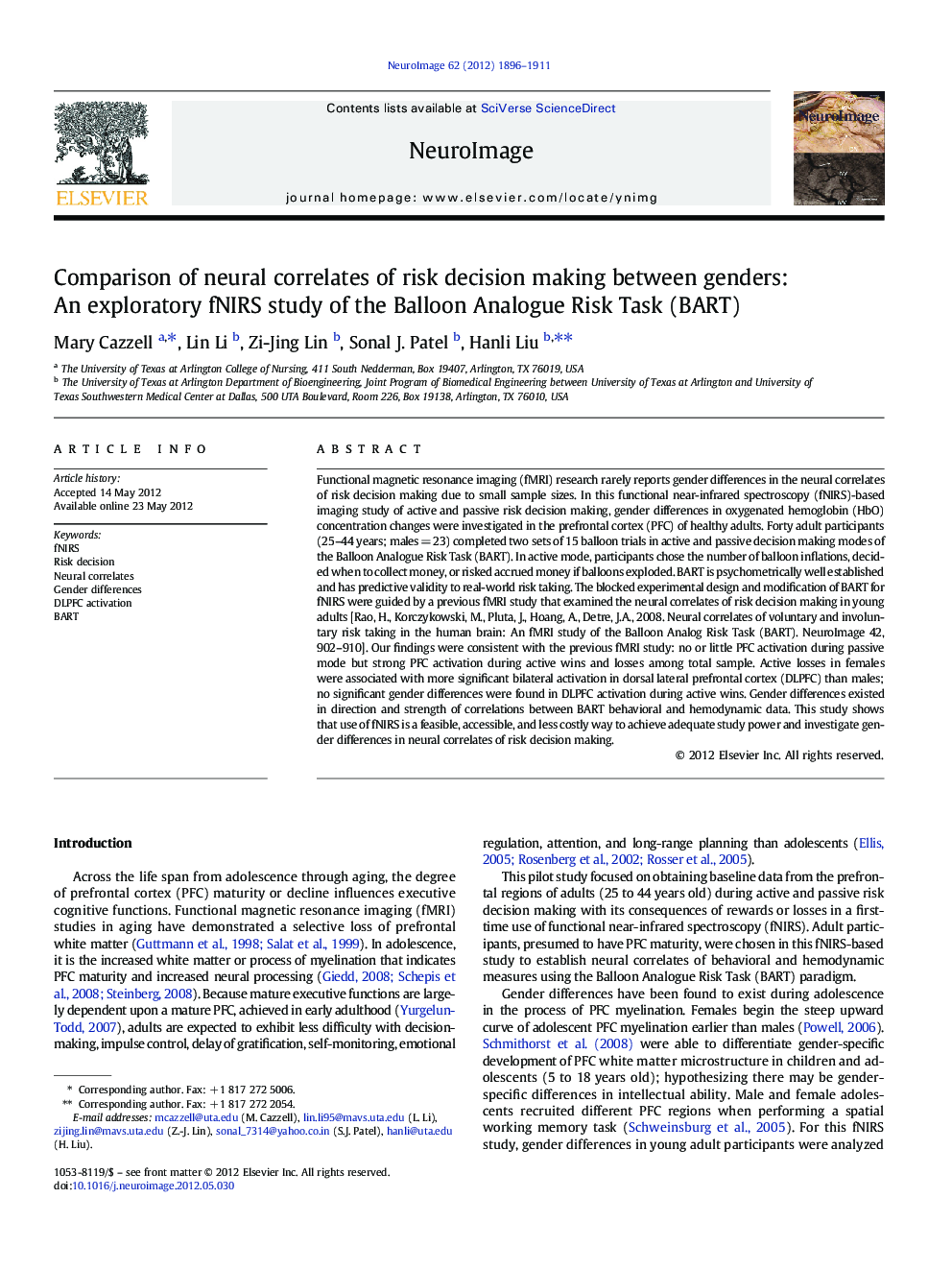| کد مقاله | کد نشریه | سال انتشار | مقاله انگلیسی | نسخه تمام متن |
|---|---|---|---|---|
| 6030447 | 1188724 | 2012 | 16 صفحه PDF | دانلود رایگان |

Functional magnetic resonance imaging (fMRI) research rarely reports gender differences in the neural correlates of risk decision making due to small sample sizes. In this functional near-infrared spectroscopy (fNIRS)-based imaging study of active and passive risk decision making, gender differences in oxygenated hemoglobin (HbO) concentration changes were investigated in the prefrontal cortex (PFC) of healthy adults. Forty adult participants (25-44 years; males = 23) completed two sets of 15 balloon trials in active and passive decision making modes of the Balloon Analogue Risk Task (BART). In active mode, participants chose the number of balloon inflations, decided when to collect money, or risked accrued money if balloons exploded. BART is psychometrically well established and has predictive validity to real-world risk taking. The blocked experimental design and modification of BART for fNIRS were guided by a previous fMRI study that examined the neural correlates of risk decision making in young adults [Rao, H., Korczykowski, M., Pluta, J., Hoang, A., Detre, J.A., 2008. Neural correlates of voluntary and involuntary risk taking in the human brain: An fMRI study of the Balloon Analog Risk Task (BART). NeuroImage 42, 902-910]. Our findings were consistent with the previous fMRI study: no or little PFC activation during passive mode but strong PFC activation during active wins and losses among total sample. Active losses in females were associated with more significant bilateral activation in dorsal lateral prefrontal cortex (DLPFC) than males; no significant gender differences were found in DLPFC activation during active wins. Gender differences existed in direction and strength of correlations between BART behavioral and hemodynamic data. This study shows that use of fNIRS is a feasible, accessible, and less costly way to achieve adequate study power and investigate gender differences in neural correlates of risk decision making.
⺠Using fNIRS in research allowed larger sample size leading to strong study power. ⺠Adult males had scant DLPFC activation after risk decisions resulted in money loss. ⺠Adult females had strong bilateral DLPFC activation after losing money. ⺠Adult female risk decisions were more conservative and risk averse than males. ⺠Moderate to strong correlations between behavioral and hemodynamic data were found.
Journal: NeuroImage - Volume 62, Issue 3, September 2012, Pages 1896-1911